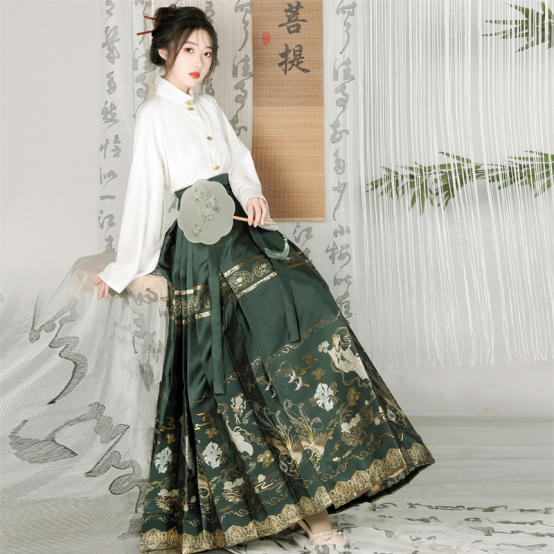The Origin of Tang Clothing
When it comes to traditional Chinese clothing that has become popular both domestically and globally, one cannot overlook Tang clothing. As a modern-day Chinese garment, Tang clothing has become a common choice for everyday wear. Why is it called “Tang” clothing?
Because the Tang Dynasty had a greater influence on the world than any other Chinese dynasty, many foreigners referred to various Chinese things as “Tang”. In modern times, as many Chinese traveled abroad, they identified themselves as “Tang people” to highlight their identity. At the same time, they wore Tang clothing to showcase their ethnic characteristics.
The evolution of Tang clothing reflects the cultural collision between East and West in the 20th century. The core design of Tang clothing draws on traditional Chinese attire, incorporating Western elements to gradually develop and grow.

What are the design elements of Tang Clothing?
The design of Tang clothing has a rich history. Firstly, one can see strong Chinese elements in Tang clothing. The main design elements include standing collars, symmetrical front openings, button knots, and continuous sleeves.
Standing Collar
The design concept of the standing collar can be traced back to the vertical collars and various neckline designs of the Ming Dynasty, with styles that are largely reflected in Ming Dynasty costumes.
Symmetrical Front Opening
The symmetrical front opening design maintains ancient China’s pursuit of moral integrity in etiquette. The patterns on the symmetrical front opening come in various forms, mainly featuring auspicious and festive floral and bird motifs, along with dynamic river cliff pattern, Ruyi pattern , and cloud pattern that blend harmoniously.
Button Knot
Button knots are used to fasten loose front openings of the garment, available in various styles such as traditional button flower knots, butterfly knots, and Ruyi knots. The appearance and evolution of button knots can be seen in various periods of Han clothing.
Continuous Sleeves
The design of continuous sleeves mainly absorbs the cuff styles of different traditional ethnic groups, with arrow cuffs being particularly common. The design also aims to meet the new needs of contemporary clothing development, fitting the body while maintaining a dignified and elegant demeanor, and facilitating daily activities.
In addition to these, there are many other unique aesthetic designs on the cuffs of Tang clothing, such as gold trimming, embroidery weaving, and appliqué designs, which comprehensively showcase the grace and elegance inherent in the gestures of the Chinese people.


Modern Changes in Tang Clothing
However, the design of fashionable Tang-style costumes has undergone great changes nowadays. For example, in modern Tang-style costumes, the round collar is changed into a square collar, and the front opening with symmetrical flaps is changed into an asymmetrical front opening. The Tang-style costumes that have absorbed the essence of foreign Western-style clothes have changed the previous rigid styles. In terms of the choice of the overall style, there are different styles and collocations of knitted sweaters, jackets and trousers, and there are more flexible and unique changes in the dressing style.
After integrating Western tailoring techniques, the overall silhouette of Tang clothing has evolved into many types suitable for different groups. The three-dimensionality and fit have enhanced its popularity. The choice of fabrics for Tang clothing is also quite particular, with silk and brocade being the main materials.
Of course, using these materials to make a piece of Tang clothing would be quite expensive. However, against the backdrop of an ever-evolving array of modern fabrics and materials, there are now more suitable choices for the general public. While ensuring quality, these materials also provide corresponding comfort.


Overall, Tang clothing is simple and practical. Wearing Tang clothing gives off a spirited and dashing image, making it a favorite among enthusiasts of traditional Han clothing.







